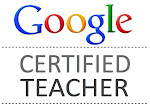We just completed our second week of the Twitter Time :: Color/Colour Poem Project. Many more weeks of color to come!
The object of this collaborative project is to create digital images, share original poems, and publish through our classroom Twitter account using the hashtag #clrpoem! Each week a color of the visible spectrum will be showcased! Everyone is invited to participate!
ROY G BIV
ROY G BIV acronym.
(red-orange-yellow-green-blue-*indigo-violet)
Here are some highlights of What is RED? week. There are poems from California, Hawaii, Georgia, Texas, and England! Thank you to all who participated!
♥ ♥ ♥
Some poets even recorded themselves reciting a poem in Seesaw!
— Nadia Reese (@ReeseCares) April 14, 2016
Color poem! RED #clrpoem https://t.co/ZUwBbDHrlW— Nadia Reese (@ReeseCares) April 14, 2016
♥ ♥ ♥
How do I collect the photos and poems? One way is via Google Classroom. Here is a screenshot for next week, What is ORANGE?
♥ ♥ ♥
We are looking forward to next week's Twitter Time!
What is ORANGE? Tweet out your class poetry using the hashtag #ClrPoem!
What was your favorite RED poem?
What are some other ways to collect poems besides using Google Classroom?



































































